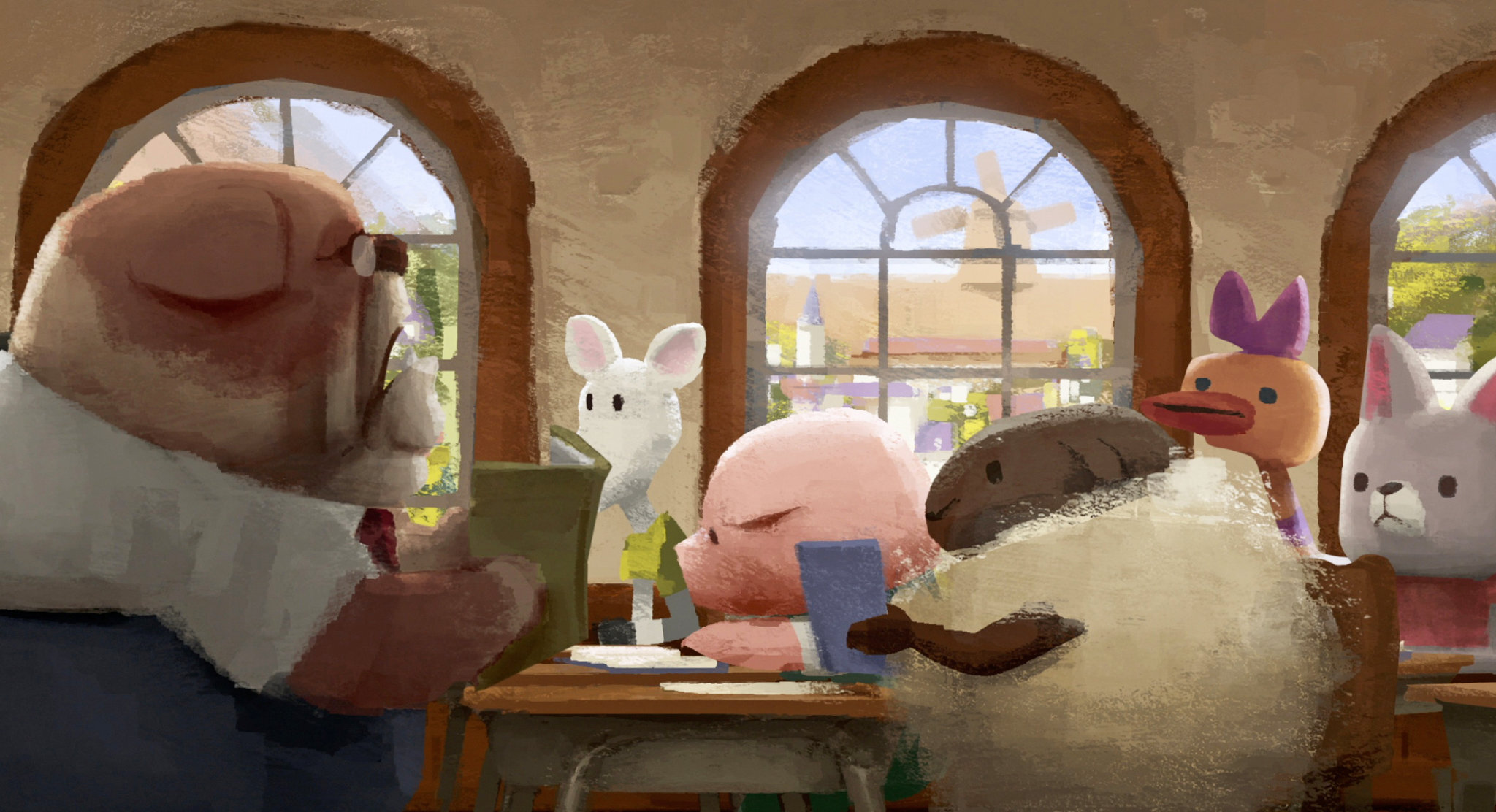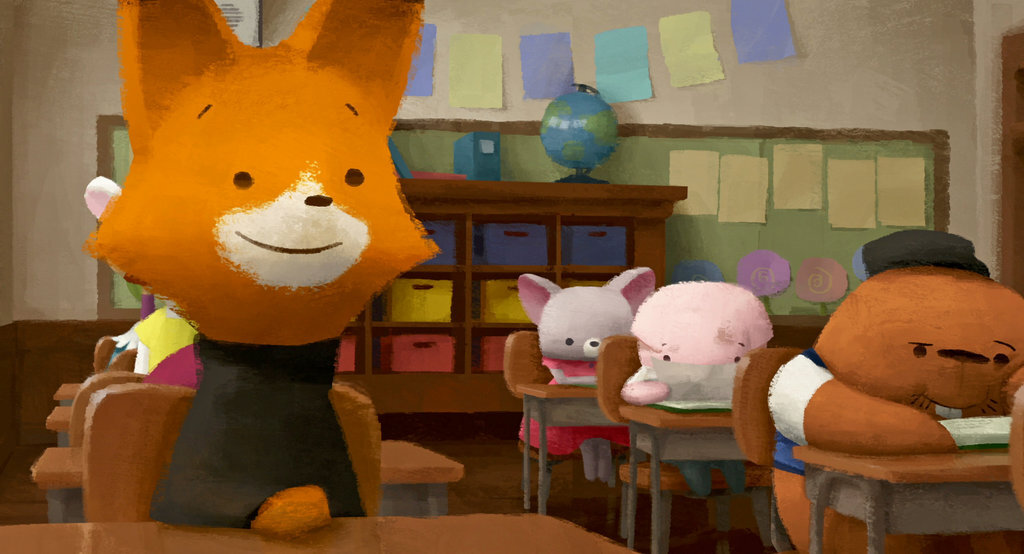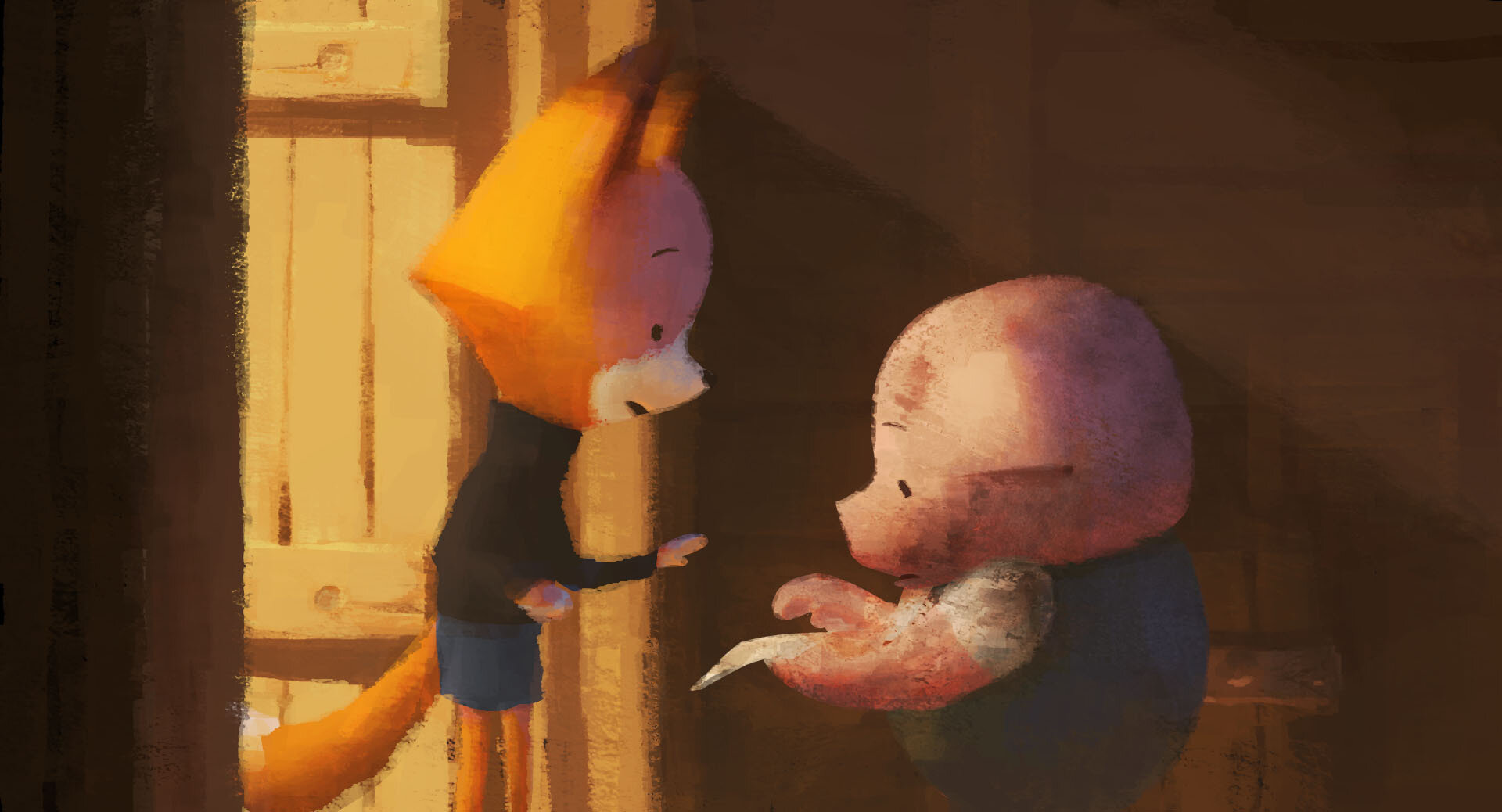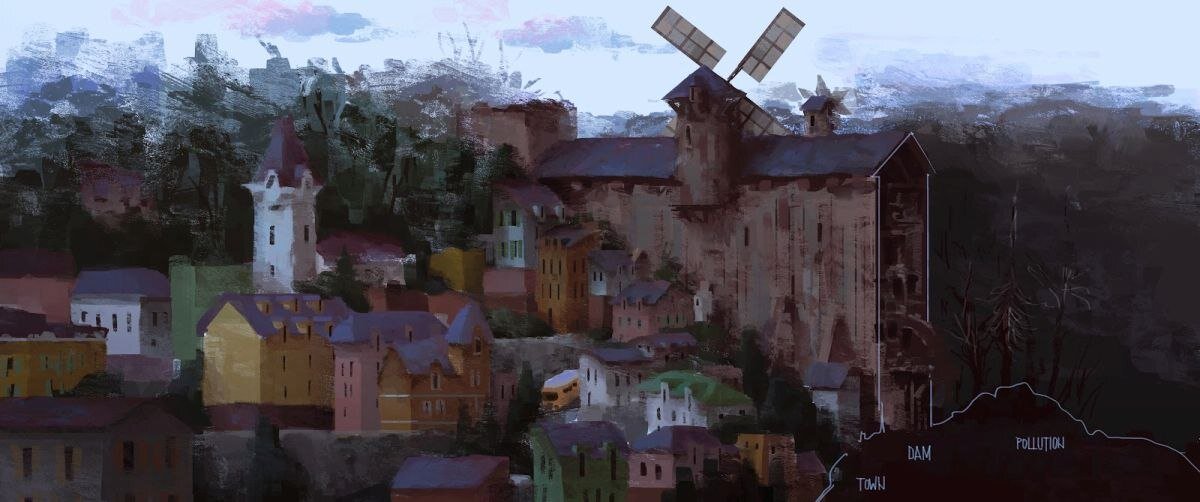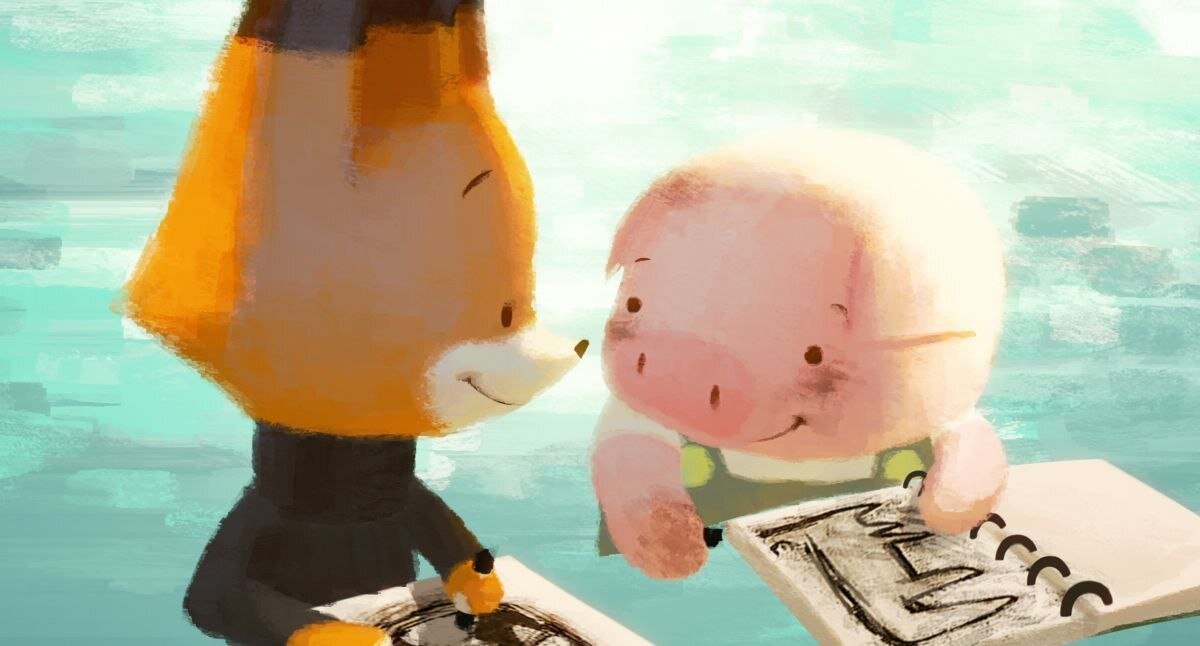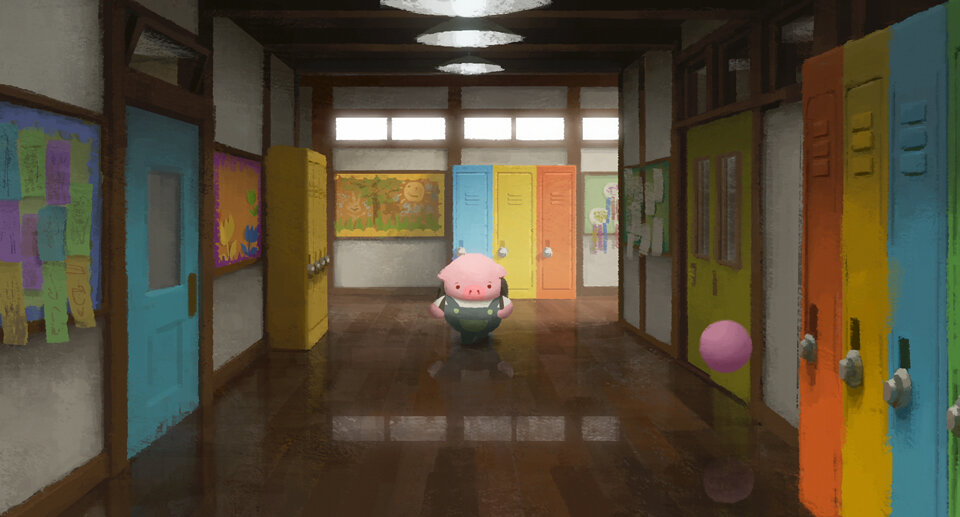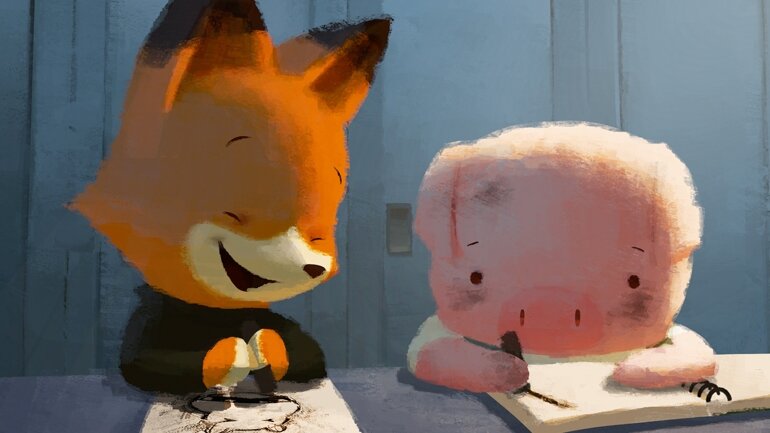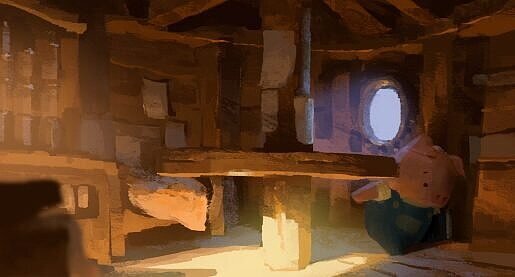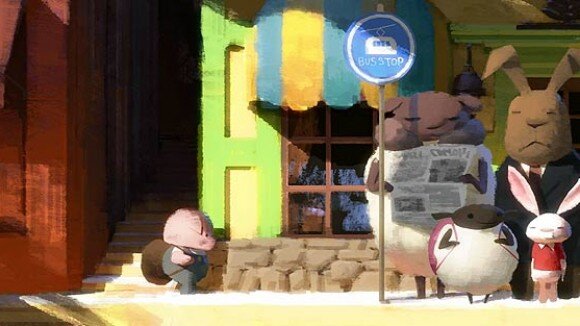The Dam Keeper
/TITLE “The Dam Keeper” by Robert Kondo and Dice Tsutsumi*
STUDIO/SCHOOL Tonko House
In a desolate future, one small town has survived because of a large windmill dam that acts as a fan to keep out pollution. The dam’s operator, Pig, works tirelessly to keep the sails spinning and protect the town, despite abuse from classmates and an indifferent public. When a new student joins Pig’s class, nothing will be the same again…
The Dam Keeper is a 2014 American animated short film directed by Robert Kondo and Daisuke Tsutsumi. It tells the story of Pig, an introverted youth who lives in a windmill and keeps a dark fog from engulfing his town. Although socially rejected by his peers, he is befriended by the artistic Fox. Kondo and Tsutsumi began developing the film while working as art directors on Monsters University and produced it through a co-op program at Pixar. This is Tsutsumi's second short film, after 2011's Sketchtravel, and Kondo's first directorial effort. Producers Megan Bartel and Duncan Ramsay were also employees at Pixar. The film received an Academy Award nomination for Best Animated Short Film.
The Dam Keeper was produced as part of a co-op program at Pixar, under which employees are allowed to develop their own films without the use of studio resources. Directors Robert Kondo and Daisuke "Dice" Tsutsumi were both art directors at Pixar. They had worked together on Toy Story 3 and Monsters University. Partially facilitated by having their offices located next to one another's, a friendship quickly formed between the two of them. While Kondo's first job was at Pixar, Tsutsumi had previously been employed at Blue Sky Studios and is married to a niece of famed Japanese animator Hayao Miyazaki. Kondo recalls having been "fascinated by [Tsutsumi's] outside experience" and recognized at the time that his co-worker's "vision always seemed to be greater than the box [of] our responsibility." In 2011, Tsutsumi released his first directorial effort - an animated short film called Sketchtravel. He was aided on the film by Kondo, who worked on it as an animator.
Kondo has described the film as having "very limited animation... like a children's book come to life." Shortly after the completion of Sketchtravel, Tsutsumi turned to Kondo with the idea of collaborating on a new short film. This was during the "heat of production" for Monsters University, a time after which, as Kondo explained, most animators normally consider taking time off. Kondo noted, "Dice wanted to take time off, but in that time, he wanted to make a film."
The two were tantalized by the potential, recognizing how much Tsutsumi had been able to achieve as a solo-director, and considering how much more they would be able to achieve together. For the following year, they developed story ideas before and after work, sharing treatments with each other through Google Docs. Unable to use their Pixar offices for the task, they wrote in their home studios, cafes - anywhere that "encouraged [their] creativity" and had internet access.
They then got together on weekends to discuss story ideas. Once their duties on Monsters University were complete, Kondo and Tsutsumi took a three-month sabbatical to begin production on their project. They began without any clear intentions - the film would simply be an experiment to see "how far [they] could go". The two co-directors rented a windowless studio right across the street from Pixar. At first, they were unsure of how to approach production. "There was no real formula or no real path as to what was right", Kondo said. "We didn't know - should we be writing a script, should we be drawing moments, should we be talking about character design?" Not until their editor, Bradley Furnish, became involved, did all of the individual elements synthesize into what the directors recognized as a potential film. The two directors refused to pressure themselves into striving for perfection; they just wanted to get the film done. Recognizing the process as a "learning experience", and choosing to extend this opportunity to the rest of the crew, they hired animators who were predominantly young and had just graduated from school. "Growth was a big part of... who we selected to bring on", Kondo said. "We kept asking, what can you gain by working on this project?" Rounding out the crew were fellow Pixar employees, such as Duncan Ramsay, who worked as a production assistant at the studio.
Ramsay's co-workers gave him the chance to come onto The Dam Keeper in an even more distinguished position than production assistant - producer. However, Ramsay feared that balancing a project like this, on the side of his regular Pixar duties, would prove an unmanageable workload. So initially, he turned the offer down. All the same, he found himself gradually being drawn into the project, and once he committed full-scale, he convinced his friend, Megan Bartel, to come onto the film as a producer with him. Bartel characterized Ramsay as "the perfect strategist"; someone who holds an ideal mixture of warmth and intelligence. Ramsay would hold "daily progress check-ins" throughout the film's production and found a "creative outlet" in writing the film's narration. The crew in its entirety consisted of about seventy people, though there was a "core group" of about twenty to twenty-five. Everyone worked on a volunteer basis. For guidance, Kondo and Tsutsumi turned to Erick Oh, one of their Pixar co-workers, who already held experience as an independent filmmaker. Oh was happy to oblige.
As he grew more involved with the film, he moved beyond his mere advisory role to become the film's supervising animator. Although he had never worked in this position before, he found it to be like a "bridge" between animating (which he had done at Pixar) and directing (which he had done on his own films). Official production began in early 2013. Although Kondo and Tsutsumi had planned to carry out most of the film's production within the three months that they took off from Pixar, this schedule was developed around an early version of the film that only ran for eight minutes. As the film's length expanded, eventually reaching eighteen minutes, the production period stretched into a total of nine months. "We just couldn't foresee the length of the story we wanted to tell in the beginning", Tsutsumi reflected. "[But] if you look at the math, three months of eight minutes to nine months of 18 minutes is not too bad." Commenting on the film's burgeoning run time, Kondo explained that eight minutes seemed insufficient to convey the kind of story that he and Tsutsumi wanted to tell - one in which a character's perception of life significantly changes. However, Kondo hopes that in the future, they will be able to make films with "just as much emotion in a shorter format."
Primarily interested in the opportunity of collaborating, Kondo and Tsutsumi did not have any specific story in mind when they commenced. They enjoy similar types of films, but did not immediately settle into the writing process - it took them some time to "find a way to do it together", Tsutsumi said. Their first idea centered on an old miner and his dog. This then evolved through four or five different iterations, before manifesting in its final form. Drawing inspiration from The Little Dutch Boy, a folktale about a young boy who saves his town by placing his finger in a dike, Kondo and Tsutsumi devised a character who would hold similar responsibility, except on a day-to-day basis.
Thematically, the duo sought to craft a story that would be true to familiar ordeals - they wanted anyone to be able to relate to the story. The dark fog that encroaches upon the town serves two purposes: it comments on the "contemporary reality" of pollution, while also symbolizing Pig's struggle with internal demons. Kondo explained that both he and Tsutsumi desired to create a world that feels "impermanent", in which things "don't seem like they can last forever." Both directors enjoy films that are "slow-paced, poetic, [and] very quiet." Although they tried to capture this aesthetic in The Dam Keeper, they were also concerned about the film lagging, and so they worked with their editor, Bradley Furnish, to make sure that the film has a balanced pace.
Tsutsumi has named Frédéric Back as his prime influence as an animator. "He [Back] always had something to say. For him, figuring out what was happening in society came first, before his craft", Tsutsumi said. Although the two directors did not seek to make a "social statement" with their film, commentary on world issues flowed naturally into their story. "[W]e tried hard to stay true to who we are", Tsutsumi said. [W]e are very conscious of what is happening today." Kondo has named Don Bluth as one of his influences, and both have named Hayao Miyazaki (Tsutsumi's uncle through marriage), as well as the films of Walt Disney - in particular, Pinocchio, Dumbo, and One Hundred and One Dalmatians. Many people have asked Kondo if Pig was based on him and if Fox was based on Tsutsumi. However, each character was actually based on both filmmakers. "I think Pig might be who we are, but Fox is who we want to be", Tsutsumi explained. He described himself and Kondo as both being "somewhat introverted". Although he supposes that they are not quite as introverted as Pig, he feels that many artists are.
“Recognizing the process as a “learning experience”, and choosing to extend this opportunity to the rest of the crew, they hired animators who were predominantly young and had just graduated from school...”
A test screening of the first story reel was organized for a group of Kondo and Tsutsumi's friends who had more writing experience than the two former art directors. As described by Kondo, the screening was "a disaster." The two directors recognized for themselves that the story was not working as they had wanted it to. "That was devastating", Tsutsumi said. The story was coming across as overly "heady" and did not connect emotionally. Although Kondo and Tsutsumi had wanted to finalize the story before starting production, they now had to revise it, while concurrently working on other aspects of the film. Otherwise, they would not have stayed on schedule. Looking forward, Kondo has noted that difficulties like this are unavoidable. He has said that he only hopes to be "more nimble" in dealing with them in the future. One scene was cut from the finished film. It was halfway through animation at the time and was removed since the directors thought that it "distracted from the emotional arc" of the story. In the scene, Pig loses track of the time, crying alone in a classroom after school. As he rushes home to the windmill, the fog nearly rolls into the town.
As art directors at Pixar, Kondo and Tsutsumi were primarily responsible for creating concept paintings. Carrying little experience with them in the actual process of animating a film, the duo developed a visual style for The Dam Keeper that utilized their painting abilities. After creating the film's animation in TVPaint, a French digital animation program, brush-stroke effects were added to each frame in Photoshop. Although Tsutsumi described this approach as "time-consuming", he felt that it "paid off in the end." Going into the project, Kondo and Tsutsumi already had similar painting styles. However, they decided to learn even more from each other and then trained their animating team to work within these styles.
During their sabbatical from Pixar, the directors took their team outside to paint together and did still lifes with them as well. At first, the animators made little progress. "We went from at least the two of us painting every day and producing things for the film, to none of us", Kondo remarked on the situation. Not a single frame of the film was produced during the first month. The directors later described this moment as "terrifying". They began to worry that the film would never see completion. However, in a sudden turn, the animators began accomplishing more than their directors had ever anticipated of them. "Literally in a day... we went from zero to exceeding output for a week... expectations for what our production could be just exploded", Kondo said. The animators learned certain techniques even faster than Kondo and Tsutsumi had. When given a task, they often returned work of a higher quality than their directors had initially asked for.
About 8,000 frames were created for the film. Even though 3D animation is not used in the finished version of the film, Maya and other 3D software programs were used for previsualization. The directors felt that this "allowed [for] the greatest exploration of scene layout in the shortest amount of time."Tsutsumi has said that many people have mistaken the film's animation for CGI "with a painterly texture over it". He actually considers this misconception to be complimentary, and he credits it to his and Kondo's painting style, which emphasizes light and "how the characters interact with [it]. In Photoshop, the animators used "adjustment layers to paint lighting on characters." This helped frames remain consistent between animators. To further aid in consistency, frames were compared in AfterEffects.
After creating scenes for the film, animators would upload them to the file-sharing service Box, tagging the directors to indicate that the scenes "were ready for review." Kondo and Tsutsumi would then leave notes on the animators' work and do a paint-over. Because Box is able to save each version of a file, no one had to "worry about losing anything", Kondo explained. This helped him and Tsutsumi keep track of everything that was going on in the production. Kondo noted that without the ease of "communication, information organization and collaboration" provided by new technology, the film "would have had to have changed in scope, complexity, and quality to be able to be done" on schedule." He feels that this would have been impossible to accomplish a decade earlier.
The film's score was composed by Zach Johnston and Matteo Roberts. Johnston had previously collaborated with the directors on Tsutsumi's Sketchtravel, as a composer and co-writer. The four would often converse over Skype. Kondo and Tsutsumi have no musical background but felt that they were "in great hands" with their composers. They were upfront about their lack of expertise in this area. When making suggestions for the score, they would acknowledge that their ideas might not be worth using. However, Johnston and Roberts both feel that the directors made valuable musical contributions. Johnston remarked that the directors made the score "more elegant and subtle" than it would have been otherwise.
“Not a single frame of the film was produced during the first month. The directors later described this moment as “terrifying”. They began to worry that the film would never see completion...”
Noting the importance of this point, Roberts said that because Pig's pain has become normalized in his life, the score should only reflect "a tinge of sadness" and not be "overly dramatic". Both composers greatly enjoyed their time on the film. They felt a considerable amount of freedom in crafting the score and found that there was no pressure to mimic the sound of other composers. After completing the film, Johnston joked that his and Roberts' careers would be "all downhill from here... unless Dice and Robert ask us to do another one." The demo score was created and recorded on Apple's GarageBand. Minna Choi then conducted MagicMagic Orchestra in performing the score live. They recorded at Fantasy Studios in Berkeley, California. The studio room contained a screen that would show corresponding scenes. Many of the instrumentalists found that they could not watch this without being overcome with emotion. As such, they had to avert their eyes.
Tsutsumi related a moment when Choi was explaining the film's story to the orchestra, and he found her moved to tears. For his part, Kondo found it "mesmerizing" to watch Choi conduct. "There's something about watching someone who's incredible at their craft", he said. Commenting on Johnston and Roberts' score, Choi called it "tender", "sweet", and "innocent".
When Kondo and Tsutsumi completed production on The Dam Keeper, they found themselves restless at Pixar. "Of course they were great to us", Kondo said of his friends at the studio. "They're our family still, but... if we didn't go back to [independent filmmaking] and challenge ourselves... in the end not only would we suffer but Pixar would suffer as well." He and Tsutsumi made the difficult decision of leaving their employment behind. Tsutsumi was a new father at the time. Kondo was soon to be married. Friends and family questioned them. However, the duo had grown deeply enamored with the experience of making films on their own. When they had first set out to direct The Dam Keeper, they had been looking for something that could mirror the early days of Pixar. "Creating something from scratch is what 'creating' means", Tsutsumi explained. "We didn't experience that beginning and, if we stayed at Pixar, we never would."
“Many people have asked Kondo if Pig was based on him and if Fox was based on Tsutsumi. However, each character was actually based on both filmmakers...”
The two of them felt they had learned more in the nine months that it took to produce The Dam Keeper than in all of their previous years as art directors. They did not want this rewarding period of their lives to only last for a short while. Recognizing that it would only become harder with the passing years to go out on their own, Kondo and Tsutsumi resigned from Pixar in July 2014. From there, they founded their own studio, Tonko House. Although they would eventually move locations to Berkeley, California, at first Tonko House was situated within the same windowless studio that The Dam Keeper was produced in - right across the street from Pixar. Kondo and Tsutsumi invited their former boss and mentor, Ed Catmull, over for a visit. He gave the duo his blessing, saying, "This is the moment you'll remember no matter what it turns into, no matter how big it becomes... that first moment when you create something from nothing, is the best time."
Tonko House derives its name from the Japanese words for pig (ton) and fox (ko). It was not the first name that Kondo and Tsutsumi considered, but all of their other ideas were already taken. To ensure that they came up with something unused, they settled on using a "nonsensical" word, but one that would still carry an "indirect" connection to their identity and work. Ko is an old-fashioned word and is not commonly used in the modern Japanese language.




